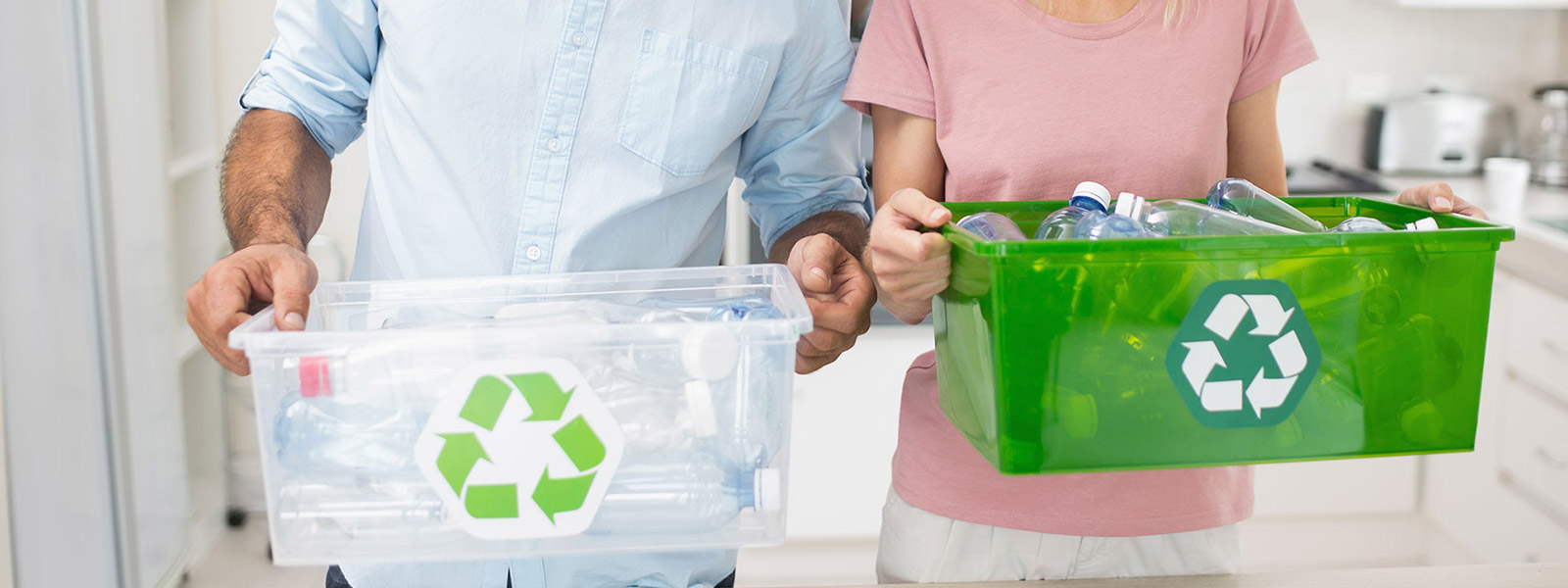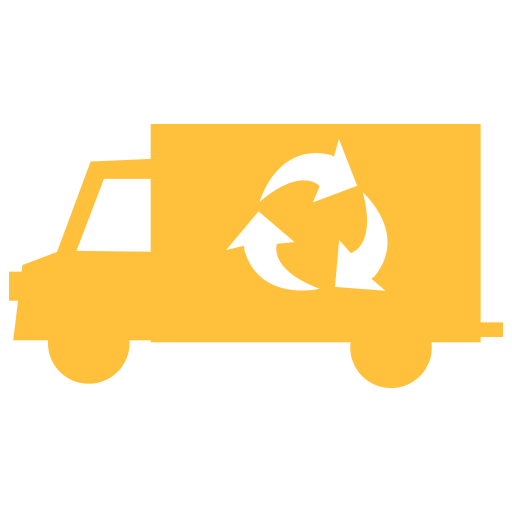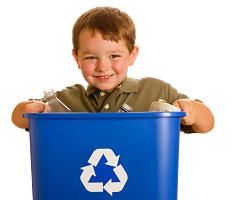Eco-Friendly Approaches to Packaging and Cardboard Waste
Posted on 26/09/2025
Eco-Friendly Approaches to Packaging and Cardboard Waste
As consumer awareness grows, the spotlight on eco-friendly approaches to packaging and cardboard waste has never been brighter. From reducing plastic usage to improving the recyclability and sustainability of packaging materials, companies and consumers are taking significant strides towards a greener future. In this article, we will explore comprehensive solutions and sustainable strategies to minimize environmental impact, maximize resource efficiency, and innovate in the realm of packaging waste management.

Understanding the Environmental Impact of Packaging and Cardboard Waste
The global packaging industry heavily relies on cardboard and other paper-based materials. While cardboard is often viewed as a more sustainable option compared to plastics, its improper disposal and overconsumption still contribute to environmental degradation. According to recent studies, cardboard accounts for a significant portion of municipal solid waste, with billions of boxes discarded annually.
- Deforestation: High demand for packaging results in extensive tree harvesting.
- Landfill Overflow: Inefficient recycling leads to crowded landfills and increased greenhouse gas emissions.
- Energy Consumption: The production and transportation of new cardboard require substantial energy and water resources.
By restructuring our approach to packaging waste and emphasizing eco-conscious packaging initiatives, we can address these pressing environmental challenges.
Innovative Eco-Friendly Packaging Materials
1. Recycled Cardboard and Paper
A cornerstone of sustainable packaging solutions is the use of recycled cardboard and paper products. By incorporating post-consumer materials, manufacturers reduce the need for virgin resources, thereby saving trees, conserving water, and lowering energy consumption.
- Benefits:
- Lowers carbon footprint associated with packaging
- Promotes circular economy principles
- Supports eco-friendly waste management
2. Biodegradable and Compostable Options
Advancements in material science have brought forth biodegradable and compostable packaging alternatives. These materials break down naturally, reducing pollution and landfill accumulation. Compostable mailers, mushroom-based packaging, and plant starch blends are just a few notable examples leading the way in eco-friendly packaging practices.
3. Minimalist and Reusable Packaging
Another key trend is the minimalist packaging design approach, which focuses on using the least amount of material necessary while maintaining product protection. Additionally, reusable packaging containers--such as collapsible boxes or returnable crates--encourage consumers to rethink the single-use mindset.
- Advantages:
- Reduces overall packaging waste generation
- Lowers shipping costs due to lighter, compact designs
- Encourages environmentally responsible consumer behavior
Strategies for Reducing Cardboard Waste in Packaging
1. Right-Sizing and Custom Fitting
A significant contributor to packaging inefficiency is the use of excessively large boxes or containers for smaller items. By leveraging right-sizing technology, businesses can ensure that each product uses the optimal amount of packaging, reducing waste and material costs.
- Benefits of Custom Fitting:
- Minimizes unused space within packages
- Reduces need for additional filler materials
- Lowers shipping emissions by maximizing truckload efficiency
2. Encouraging Cardboard Recycling
Effective cardboard recycling programs are crucial to keeping recyclable materials out of landfills. Both companies and communities can promote recycling by providing clear sorting instructions, accessible collection points, and incentivized return schemes.
Key steps to improve cardboard recycling:
- Educate consumers on proper flattening and cleaning of boxes for recycling
- Partner with local recycling facilities and haulers
- Label packaging for easy identification of recyclable content
3. Implementing Closed-Loop Systems
A closed-loop packaging system involves designing packaging that can be reused, returned, and ultimately remanufactured into new packaging. This circular model drastically reduces waste while decreasing dependency on virgin materials.
- Examples:
- Deposit programs for reusable boxes
- Take-back schemes for commercial clients
- Corporate partnerships to standardize packaging formats
Innovations in Cardboard Waste Management
1. Advanced Sorting Technologies
Modern recycling facilities increasingly utilize AI-driven sorting machinery and optical scanners to efficiently separate cardboard from other waste streams. These technologies improve recycling rates and reduce contamination, ensuring higher-quality recycled materials.
2. Upcycling Cardboard Waste
Beyond recycling, upcycling gives discarded cardboard a second life as value-added products. Cardboard can be transformed into everything from furniture and acoustic panels to educational toys and art supplies, showcasing the creative potential of what was once considered waste.
3. Composting Cardboard Waste
For cardboard that is too contaminated for recycling, composting provides an alternative disposal method. Cardboard serves as an excellent carbon source in compost bins, breaking down into rich, organic matter that can be used to fertilize gardens and crops.
- Tips for Composting Cardboard:
- Remove tapes, labels, and non-paper elements
- Shred cardboard for faster decomposition
- Mix with green (nitrogen-rich) compost materials
Corporate Responsibility and Sustainable Packaging Initiatives
Brands around the world are responding to consumer demand for sustainable practices. From pledging to use 100% recyclable packaging to investing in biodegradable solutions, companies are driving change across diverse industries. Corporate policies on green packaging strategies are not only beneficial for the planet but can also drive long-term savings and improved brand reputation.
- Examples of Leading Initiatives:
- Amazon: Introduced the "Frustration-Free Packaging" program to reduce excess materials and simplify recycling.
- IKEA: Invests in mushroom-based and corrugated cardboard packaging alternatives.
- Unilever: Pledges to make all plastic packaging reusable, recyclable, or compostable by 2025, with similar benchmarks for paper-based materials.
*By prioritizing eco-friendly packaging strategies and considering the full lifecycle impact of materials, businesses can significantly reduce their environmental footprint while maintaining competitive advantage.*
Empowering Consumers: How to Support Eco-Friendly Packaging
Consumers play a vital role in driving demand for green packaging and responsible cardboard disposal. Educated choices and active participation can accelerate the transition to a more sustainable packaging ecosystem.
Top Ways Consumers Can Make a Difference:
- Prioritize products with minimal or recycled packaging
- Flatten and clean cardboard before recycling
- Re-use boxes for storage, shipping, or creative projects
- Shop from brands with transparent sustainability efforts
- Participate in local recycling and composting programs
*Every small effort adds up, helping to create a more circular and sustainable way of consuming and disposing of packaging materials.*

The Future of Eco-Friendly Packaging and Cardboard Waste Reduction
With innovation at the forefront and policies aligning to support sustainability, the future holds promise for more sustainable packaging solutions and effective cardboard waste reduction. Policy incentives, increased consumer education, and advancements in recycling infrastructure are poised to further reduce the environmental impact of packaging waste.
- Emerging Trends to Watch:
- Smart packaging requiring fewer materials and using easily recyclable or compostable elements
- Decentralized zero-waste retail models with returnable containers
- Eco-design standards influencing everything from graphic design to raw material sourcing
Conclusion: Charting the Path to Sustainable Packaging and Cardboard Waste Management
Transitioning to eco-friendly packaging practices and optimizing cardboard waste management is a shared responsibility among manufacturers, brands, policymakers, and consumers. As demand for sustainable solutions continues to rise, embracing innovative materials, efficient design strategies, and robust recycling infrastructure becomes both an ethical imperative and a smart business move.
By rethinking packaging design, supporting upcycling and recycling efforts, and encouraging circular economy principles, we can transform cardboard and packaging waste from an environmental burden into a valuable resource stream. Let's work together to build a cleaner, greener future for coming generations--one box at a time.
Adopting these eco-friendly approaches to packaging and cardboard waste not only protects the planet but also cultivates innovation, efficiency, and trust among today's conscious consumers.

 020 3409 4688
020 3409 4688 020 3409 4688
020 3409 4688




 House clearance
House clearance Waste Removal
Waste Removal Here at Rubbish Collection we offer an efficient and affordable house clearance at the best price. We can perform full domestic clearance in London, removing...
Here at Rubbish Collection we offer an efficient and affordable house clearance at the best price. We can perform full domestic clearance in London, removing... Waste can accumulate quickly and before you know it, it’s everywhere and taking up lots of space. If you would like it professionally removed, hire Rubbish Collection for the...
Waste can accumulate quickly and before you know it, it’s everywhere and taking up lots of space. If you would like it professionally removed, hire Rubbish Collection for the...





